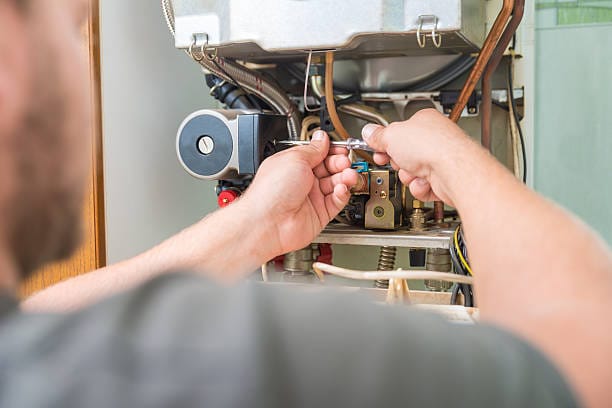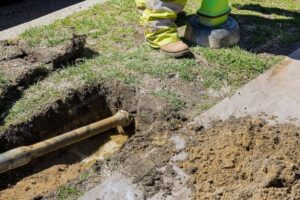Everything you should know about water heater repair near me in May to avoid costly plumbing issues.
If you’ve ever turned on the shower expecting hot water and been met with a chilling surprise, you’re not alone. Whether it’s inconsistent heating, strange noises, or a complete lack of hot water, these signs point to the need for professional help. Searching for “water heater repair near me” can feel overwhelming, especially when you’re dealing with urgent issues. Knowing when to DIY and when to call a licensed plumber nearby could save you from expensive future repairs.
Common Water Heater Issues
Experiencing a lack of hot water can be frustrating. Common issues include:
- Thermostat Malfunction: A faulty thermostat can prevent the water heater from reaching the desired temperature.
- Mineral Deposits at the Tank’s Base: Hard water minerals gradually settle at the bottom of the water heater tank. This buildup can form a thick layer that interferes with heat transfer.
- Pilot Light Issues: For gas heaters, a blown-out pilot light can halt heating.
- Aging Unit: Water heaters typically last 8-12 years. Beyond this, efficiency declines.
DIY Troubleshooting Tips
There are several basic troubleshooting steps that you can take to potentially resolve the issue on your own.
-
Check the Thermostat Settings
Start by verifying the thermostat on your water heater. It may have been accidentally adjusted or reset during cleaning or a power outage. For optimal performance:
- Electric Water Heaters: Set electric water heater temperature to 120 – 140°F. Anything lower may not provide hot enough water, while anything higher could be dangerous.
- Gas Water Heaters: Look for a temperature dial near the base of the unit. Adjust it slightly higher and wait about 30 minutes to test for any change.
If adjusting the thermostat doesn’t help restore hot water, the issue may lie deeper like with a faulty heating element or gas control valve.
-
Inspect the Pilot Light (Gas Units Only)
If you have a gas water heater and it’s not producing hot water, the pilot light may be out. To check and relight the pilot light:
- Turn the gas control knob to “Pilot.”
- Press and hold the reset button while using a long lighter to ignite the flame.
- Keep the button pressed for 30 seconds, then switch the dial to “On.”
Safety Tip: If you smell gas or hear a hissing sound, do not attempt to relight it. Leave the house right away and contact your gas provider.
-
Flush the Tank to Remove Sediment Buildup
Over time, sediment from hard water can accumulate at the bottom of your tank, reducing efficiency and causing strange popping or rumbling sounds.
You can flush your tank by:
- Turning off the power/gas supply to the unit.
- Shutting off the cold water supply.
- Connect a hose to the bottom valve.
- Let the water flow outside or into a large container.
- Turning the cold water back on briefly to stir and rinse remaining sediment, then closing everything back up.
Doing this once a year can help extend the life of your heater and prevent unnecessary calls for service.
- 4. Use the Reset Button (Electric Units)
Most electric water heaters come with a reset button, typically found on the thermostat behind a small panel on the unit. If your unit stops working suddenly:
- Turn off the power at the circuit breaker.
- Remove the access panel and press the reset button (usually red).
- Close the access panel, restore electricity, and wait 30–60 minutes to check for heat.
If the reset button trips repeatedly, it could be a sign of a more serious issue such as a failing thermostat or faulty heating element.
5. Check for Obvious Leaks or Corrosion
Walk around your unit and look for visible water puddles, rust, or moisture near the base. This could point to a leaking tank which is a serious issue requiring immediate professional attention. While minor drips may stem from loose valves or fittings, any significant corrosion is often a sign that it’s time to replace the broken water heater.

When to Call a Professional
If issues persist after troubleshooting, it’s time to consult a professional. Signs you need expert help include:
- Persistent Leaks: Could indicate a failing tank.
- Unusual Sounds: Popping or knocking may indicate buildup inside.
- Rust-Colored Water: Reddish water may indicate corrosion inside the tank.
- Inconsistent Water Temperature: Fluctuations can be due to faulty components.
For urgent issues, search for an emergency plumber near me or 24 hour plumber to address problems promptly.
Choosing the Right Plumbing Expert
Selecting a qualified professional ensures effective repairs. Consider the following:
- Credentials: Make sure they have proper licensing and training.
- Track Record: Choose a local water heater expert with solid local experience.
- Services Offered: Choose a company that provides comprehensive services, including water heater installation, water heater replacement, and tankless water heater installation.
- Feedback: Look for highly rated customer reviews.
Preventive Maintenance Tips
Consistent upkeep can help the unit last longer.
- Annual Inspection: Have a licensed plumber nearby inspect the unit yearly.
- Flush the Tank: Remove sediment to maintain efficiency.
- Inspect Anode Rod: Swap it out if it shows heavy wear.
- Pipe Insulation: Use in cold areas to help avoid freezing.
Implementing these steps can help avoid unexpected breakdowns and costly repairs.
Conclusion
Understanding common water heater issues and maintenance practices is crucial for uninterrupted hot water supply. If you’re experiencing water heater issues or need professional maintenance, visit Smelscer Plumbing today. Our team of top rated plumbers offers comprehensive services, including slab leak repair, burst pipe fix, and same day water heater installation. Trust our local water heater experts for reliable and efficient solutions.




